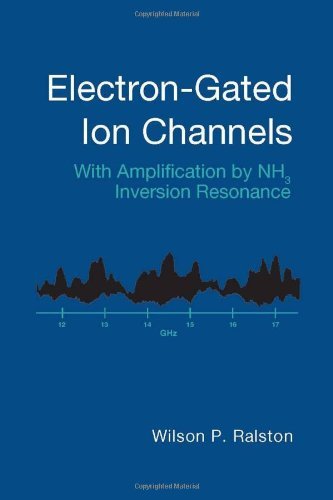
Tell your friends about this item:
Electron-Gated Ion Channels: With Amplification by NH3 Inversion Resonance - Materials, Circuits and Devices
Ralston, Wilson P. (BioKinetix Research, Stamford, Connecticut, USA)
Electron-Gated Ion Channels: With Amplification by NH3 Inversion Resonance - Materials, Circuits and Devices
Ralston, Wilson P. (BioKinetix Research, Stamford, Connecticut, USA)
Understanding ion channel gating has been a goal of researchers since Hodgkin and Huxley's classic publication in 1952, but the gating mechanism has remained elusive. In this book, it is shown how electrons can control gating. Introducing the electron as a gating agent requires amplification, but until now there has been no appropriate mechanism for amplification.
The new approach to gating, based on the electron and quantum mechanics, elucidates mechanisms important to cellular function and signaling. A greater understanding of the quantum-mechanical mechanisms and the role of the electron will likely bring benefits to human health, including improvements in drug therapy and treatments for ion channel related diseases.
Ion channel gating influences many cellular processes and is at the center of electrical and calcium signaling in the nervous system. The gating of ion channels has been intensively investigated over the past 15-20 years and a number of models have been proposed for gating.
For the first time, this book presents a comprehensive analysis, based on electrons controlling the ion channel gates. The theory and gating model are extensively linked to published experimental observations. The intrinsic simplicity of electron gating elucidates mechanisms important to the functions of nerve cells.
A NEW APPROACH
The new approach to gating, based on the electron and quantum mechanics, elucidates mechanisms important to cellular functioning and signaling. A greater understanding of the quantum-mechanical mechanisms and the role of the electron will likely bring benefits to human health, including improvements in drug therapy and treatments for ion channel related diseases, such as:
1. Cardiac arrhythmias, Long QT syndrome and Brugada syndrome may result from genetic mutations in sodium, potassium or L-type calcium channels that alter gating and timing. Electron-Gated Ion Channels explains long time intervals between open and closed states. A model for L-type calcium oscillators (Chapter 8), based on voltage-sensitive electron tunneling, show how burst mode oscillations can occur in pacemaker cells. This may help to understand a variation in timing intervals caused by some genetic mutations.
2. Hypokalemic periodic paralysis (HypoPP) is a muscle disorder reported to be caused by inherited mutations in the voltage sensor (S4) of a sodium or calcium channel. Electron-Gated Ion Channels suggests how a shift in the activation curve or change in inactivation time may result from S4 mutations that alter voltage sensitivity or the electron tunneling distance between arginine and lysine sites.
3. Epilepsy, schizophrenia and Alzheimer?s disease are reported to have changes in the theta rhythm (4 - 12 Hz). Electron gating models show how theta and alpha waves in the brain are likely produced by electron tunneling oscillations in the voltage sensor of calcium or sodium ion channels. An L-type calcium oscillator model (Chapter 8) provides a 4 - 12 Hz oscillation frequency with an 8-residue tunneling distance between arginine and lysine sites at the cytoplasmic end of S4 in domain IV.
KEY FEATURES
? A comprehensive analysis of ion channel gating, based on amplified single-electron tunneling.
? Microwave Thermal Fluorescence Spectroscopy experiments show, for the first time, spectra for quantum states of inverting NH3 on arginine?s side chain.
? Amplification of ~25 fold, based on NH3 inversion, provides the voltage sensitivity for 4 tunneling electrons to control all sodium, potassium and calcium channel gates.
? Explains long time-constants for ion channel inactivation and the immobilization of gating charge.
? Single-electron tunneling with long time-constant inactivation provides a simple mechanism for producing burst-mode oscillations in L-type calcium channels.
190 pages
| Media | Books Hardcover Book (Book with hard spine and cover) |
| Released | June 30, 2005 |
| ISBN13 | 9781891121418 |
| Publishers | SciTech Publishing Inc |
| Pages | 190 |
| Dimensions | 453 g |
| Language | English |

 Christmas presents can be returned until 31 January
Christmas presents can be returned until 31 January

